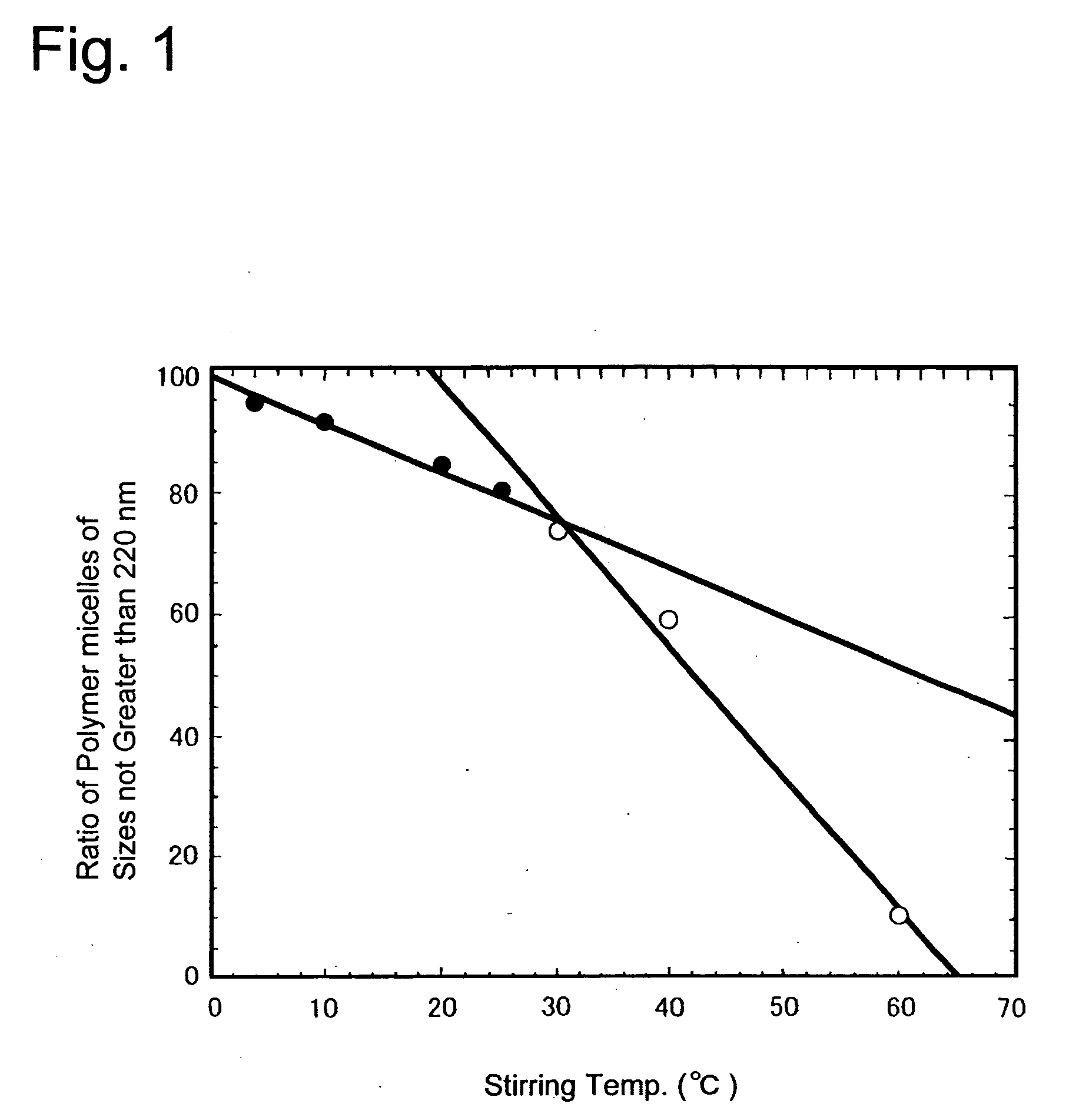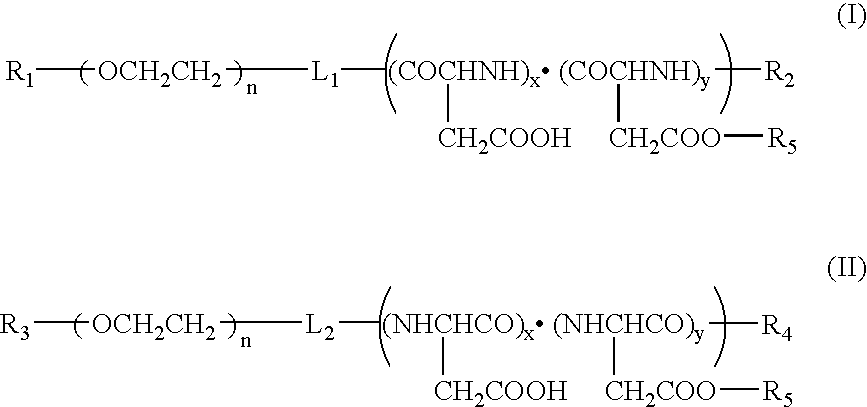Method for preparing a polymer micelle pharmaceutical preparation containing drug for injection
a technology of polymer micelle and pharmaceutical preparation, which is applied in the direction of drug composition, pharmaceutical product form change, and elcosanoid active ingredients, can solve problems such as toxic to living, and achieve the effect of high drug-encapsulation efficiency in polymer micelles
- Summary
- Abstract
- Description
- Claims
- Application Information
AI Technical Summary
Benefits of technology
Problems solved by technology
Method used
Image
Examples
examples 1-5
AND CONTROLS 1 and 2
Block copolymer used:
[0039] Polyethylene glycol (molecular weight, 12,000) 50% hydrolyzed benzyl polyaspartate (n=50) (hereinafter referred to as “PEG-PBLA 12-50 P.H. 50%”): [0040] n: a number that makes the molecular weight of the poly(ethylene glycol) about 12,000 [0041] x+y: about 50 [0042] x / (x+y)=0.5
[0043] Each 20 mg of paclitaxel and each 100 mg of PEG-PBLA 12-50 P.H. 50% were measured out in each one screw bottle, to which 2.0 ml of acetone was added to dissolve the content therein under stirring. Then nitrogen gas was blown thereto to remove most of the acetone, followed by drying under reduced pressure to completely remove the acetone. To each bottle then 10 ml of water was added and sealed airtight. The bottles were violently stirred for one day and one night, at 4° C. (Example 1), 10° C. (Example 2), 20° C. (Example 3), 25° C. (Example 4), 30° C. (Example 5), 40° C. (Control 1) and 60° C. (Control 2), respectively, and subjected to an ultrasonic tr...
PUM
| Property | Measurement | Unit |
|---|---|---|
| temperature | aaaaa | aaaaa |
| temperature | aaaaa | aaaaa |
| temperature | aaaaa | aaaaa |
Abstract
Description
Claims
Application Information
 Login to View More
Login to View More - R&D
- Intellectual Property
- Life Sciences
- Materials
- Tech Scout
- Unparalleled Data Quality
- Higher Quality Content
- 60% Fewer Hallucinations
Browse by: Latest US Patents, China's latest patents, Technical Efficacy Thesaurus, Application Domain, Technology Topic, Popular Technical Reports.
© 2025 PatSnap. All rights reserved.Legal|Privacy policy|Modern Slavery Act Transparency Statement|Sitemap|About US| Contact US: help@patsnap.com



